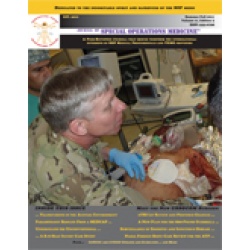Zoonotic And Infectious Disease Surveillance In Ecuador: Ehrlichia Canis, Anaplasma Phagocytophilum, Borrelia Burgdorferi, And Dirofilaria Immitis Prevalence Rates In Canines
McCown ME, Monterroso VH, Grzeszak B 11(3). 61 - 65 (Journal Article)
Vector-borne diseases (VBD) make up a large number of emerging infectious and zoonotic diseases. Ticks, fleas, and mosquitoes are effective vectors parasitizing canines, making dogs adequate reservoirs for zoonoses. The U.S. military deploys personnel and government- owned animals around the world with possible risk of exposure to VBD. Canine VBD have veterinary and public health significance for the host nations as well as for the U.S. troops and its working animals deployed in the theater of operations. These factors make disease surveillance a great importance. The objective of this work was to survey canines from the cities of Manta and Guayaquil in Ecuador to determine prevalence of heartworm disease (D. immitis), ehrlichi os is (E. canis), Lyme disease (B. burgdorf eri), and anapl asmosis (A. phagocytophilum). Canine blood samples (1-3ml) collected from the cities of Manta (n=50) and Guayaquil (n=50) were tested on site using a SNAP® 4Dx® Test Kit. Prevalence for single or multiple disease status was calculated for each city. In the city of Manta the overall prevalence of diseases was 78%; 52% for E. canis alone, and 26% for co-infection with E. canis and A. phagocytophilum. The overall prevalence for the city of Guayaquil was 88%; 40% for E. canis alone, 22% for A. phagocytophilum alone, and 26% for co-infection with E. canis and A. phagocytophilum. Neither heartworm disease nor Lyme disease was detected in any samp le. In conclusion, this study showed the extensive presence of E. canis and A. phagocytophilum in both cities in Ecuador, emphasizing the value of surveillance for zoonotic diseases to determine disease prevalence and risk assessments, as well as to implement control measures.


 Español
Español 




